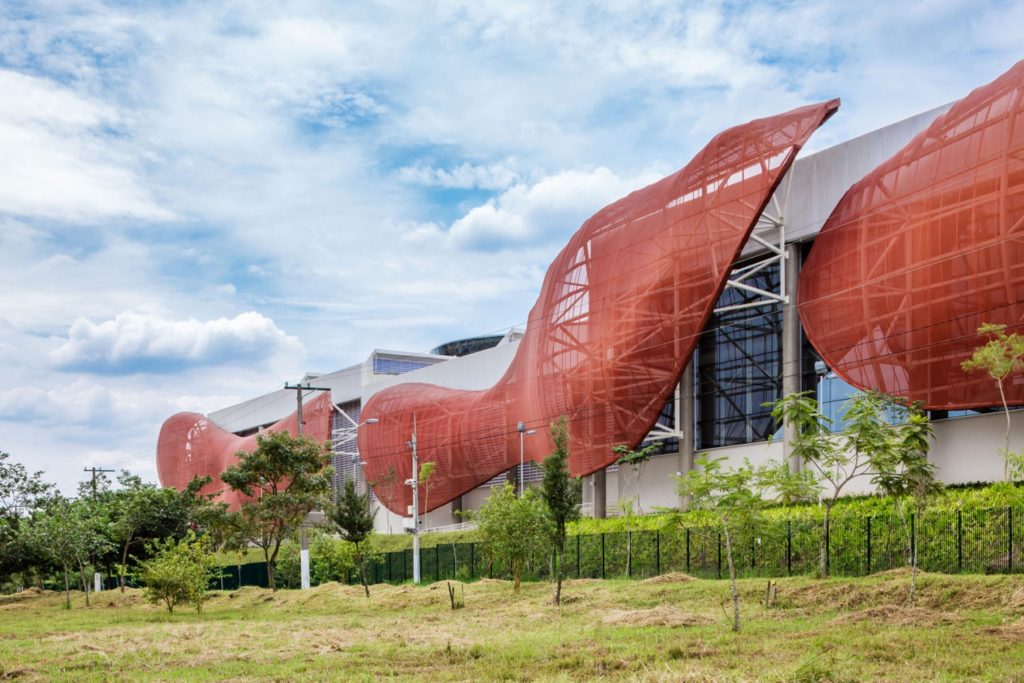Benefits of fabric façade for new buildings & renovation of buildings

Globally, architects and building owners have forever been examining the most optimal fabric to design façades. In recent times, fabric façades have been in use, especially on the exterior surfaces of buildings. Regardless of the age of a building, façades made of textile can be employed at the outward level. Notably for stadiums, shopping centres, office buildings, pop-up restaurants, and the like.
Structure of Fabric Façade in Buildings
Let’s begin at the grassroots level. What exactly goes into the making of a fabric façade? Quite a number of parameters need to be examined before its use. To begin with, semi-transparent mesh fabric is mostly considered optimal as it aids in the permeation of light. Made from woven glass, PVS / PES fabric comes in varied colours and prints these days. The architect or site designer would next look at the open area, width and translucency to finally fix upon the ideal tensile strength that needs to be used for the project. Pre-fabricated textile façade panels are next erected onto a supporting structure or an aluminium profile.
Advantages of Fabric Façade
Provides creative freedom: With the advent of fabric façades in architecture, no building needs to look dreary any longer. It’s one’s space to make a mark.
Delivers thermal & visual protection: It not just cools the interiors of the building, fabric façade also helps in visual comfort. Moreover, it blocks harmful UV radiation while allowing diffused light to pass through.
Saves energy: Most brands offer LEED, or Leadership in Energy and Environmental Design in fabric façade. LEED is one of the most globally recognized symbols for green building certification that supports sustainable living.
Limits glare: Being energy-efficient, fabric façade promotes privacy within indoors while regulating heat and temperature.
Extended durability: Largely based on the exact fabric tension in use, fabric façade can be used over a prolonged period of time.
Delivers aesthetic appeal: Most of the players today offer 3D volumes, curves, lighting effects and backlit animations and personalized printed graphics.
Light as a feather: Unlike other materials that are employed, textile façade is considerably lighter; thus making it easy to erect as well as dismantle.
Works for old & new: Buildings or structures that are aged or fresh can use fabric façade. As it is fairly simple to install, architects recommend it for new buildings and also renovation projects.
Weather & UV-resistant: Textile façade can stand the test of time, heat, rain and even UV; thus, making it the preferred material.
Printable: Additional branding areas and aesthetics can be achieved via graphic printing.
Cost-effective: Relatively less expensive compared to other metal second skin facades with
Acoustic performance: Improved acoustic performance of the building makes this an ideal material near airports, highways, railway tracks, etc.
Fire-resistant: Rated M1, B-s2,d0 – which means that fabric self-extinguishing do not propagate fire
Impact-resistant: Tear Resistance of fabric is 6.6 T/ml, release resistance with Aluminium Profile pulley system is 4.2 T/ ml

